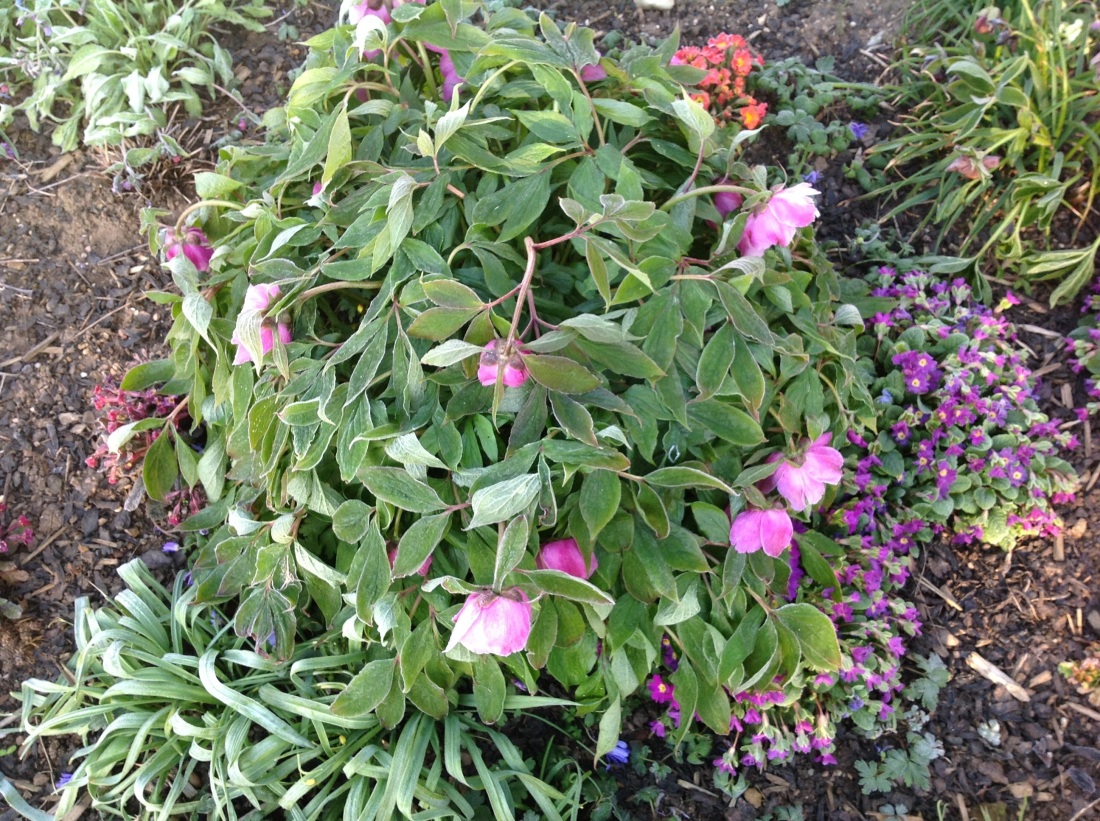9 March, 2013.
It is not the end of winter after all, it is freezing cold again and trying to snow.The one plant that we have in the garden is masses of primroses which have self seeded everywhere. It makes me laugh when I think of one of my best friends who actually bought 150 from Jamie Chichester, and then was only left with 20. I went down to the paddock this morning where 5 years ago we planted 200 Crocus Vernus Vanguard, 200 Crocus Vernus Pickwick and 200 Crocus Queen of the Blues. Vernus Vanguard flowers first. E.A. Bowles said crocus vernus were the best to establish in rough grass, and he was going to plant 200 crocus vernus Margot each year. Margot is not available now, so we are going to choose Crocus Vernus Grand Maitre instead, and order it from Avon Bulbs. The last two years pheasants have eaten them all, and they have been a disaster, but this year, despite Polly doing her best to mow them over, we have more than 700 with crocus vernus pickwick proving the dominant one. We have them interspersed with snowdrops and they seem to flower at the same time. The idea was to sit with a cappucino by the winter circle in the paddock and look across at them. There is a new crocus tommasianus called crocus tommasianus ‘Yalta’ which is beautiful beyond words, and similar to a small edition of vernus vanguard. I must remember to order it next year. Val Bourne brought my attention to it by describing it in the Saturday Telegraph, she does write inspiringly.
Last week we went to see our two friends at Woodchippings, Richard Bashford and Valerie Bexley. How amazing it all was, only a third of an acre and every inch planted with the choicest hellebores, ferns, cyclamen, different snowdrops which are constantly divided, and lots of corydalis. This year they have discovered species crocuses, and have made several trips to Little Heath Farm Nursery, which is near Berkhamsted. This nursery is coming for a Rare Plant Fair at Evenley Wood on April 7th. We must try and remember to go as it is near us. I came back from Woodchippings in a complete haze, and we have decided to replace all the white hellebores on the left hand side, as they are all seedlings and rather muddy in colour. Rich would not give them pride of place. You live with something and you do not notice that it is simply hopeless until you see something that is quite perfect and you cannot fail to make the comparison. Polly and I got on to Ashwoods website, where everything was completely mouth watering. At the end of the telephone conversation, Steve said “how did you hear of us” and I replied that I had fallen into their clutches a long time ago.
Plant of the Month
We decided to do a plant of the month after reading John Grimshaw’s blog on his plant of the year. How do you choose that we thought! Having already taken a photo of Tulipa kaufmanniana ‘The First’ earlier in the day this was the obvious choice for March. It’s taken its time in coming up and flowering during to the persisting cold weather and now more snow. The tips of the leaves showed at the beginning of February, the flower buds arriving suddenly about 3 weeks ago. It’s one of those plants that appear over night and if the sun is hot can be over in 3 days. But this year we’ve already had a week of tight buds, now garlanded with snow. Even with the sun shining directly on them, the flower buds are refusing to open. There aren’t any bees around to pollinate them anyway – I’ve seen only about 6 so far this year, rather worrying.
We have this tulip planted in an east facing border in well drained and probably quite poor soil at the roots of a large cotinus. The shrub will keep the bulbs dry during the summer and as it’s deciduous it won’t cast any shade during the spring when the tulip’s leaves are up. The poor gritty soil keeps the slugs at bay too – the reason Christopher Lloyd gives as to why he couldn’t grow them. Other than keeping the molluscy critters off it seems you just need to plant them deep and leave them alone. I like plants like that!


52.113702
-1.284074



